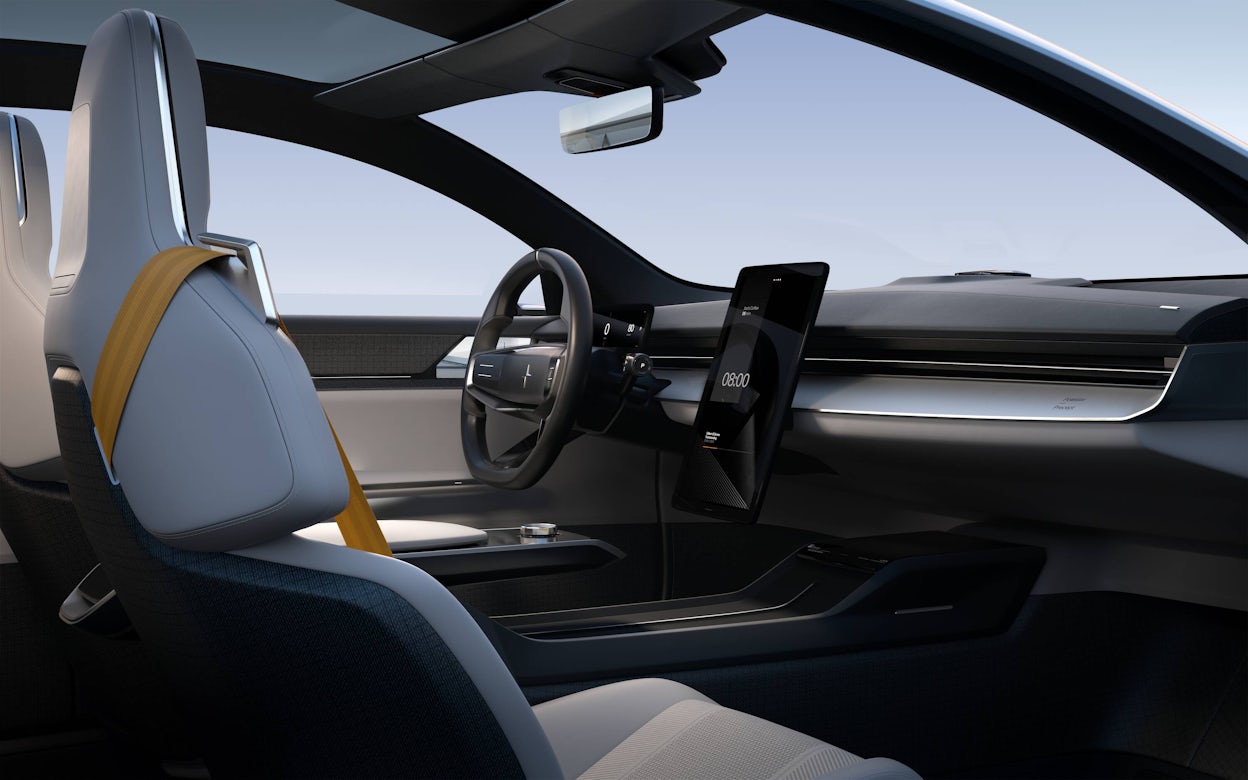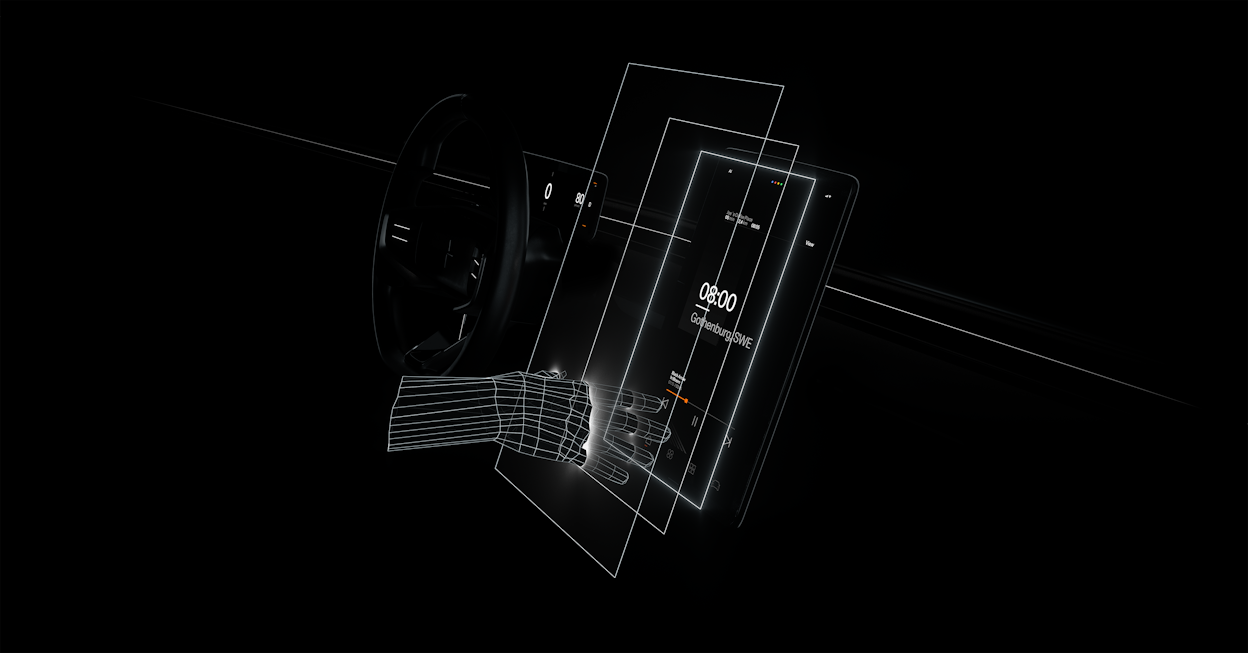Precept: Android Automotive 2.0
“Hey Google.”

We are all used to that short phrase allowing us to tap into the combined knowledge of the internet to help solve whatever problem we have. In the Precept, deep integration with the vehicle enables even more useful insight and related action.
The key to this advancement is context, the ability to understand the situation the vehicle finds itself in. Precept's sensor systems, both interior and exterior, build a picture of the vehicle and its surroundings, from traffic conditions, to state of charge, from current destination to next diary entry. This context enables the Android Automotive system and the vehicle to work more seamlessly together, to perform better.
In the interior, eye-tracking and proximity sensors allow information to be tailored across display screens and react further should the driver reach out to them. Information is more easily understood, ensuring a safe environment and minimal effort.

The interior sensors play on how our brains pick up information from the peripheral vision. “When you look at the driver display, a layer of informational depth is added but focussing back on the road, basics are displayed larger to allow a perception in peripheral vision. " says Polestar Head of Design Maximilian Missoni.
The exterior sensor systems work with Google Maps. The system integrates and displays the information that the sensors and radar pick up, such as the vehicles, pedestrians, and buildings surrounding the car. That, combined with Google Maps data, enables realistic, real-time turn-by-turn navigation, the vehicle thinking ahead to ensure lane changes, for example, are safe.
All the ideas in the Precept are built upon the experience gained developing Polestar 2. Polestar 2 was the first car in the world with Android Automotive and the collaboration with Google will continue to develop in the future.
Thanks, Google.








